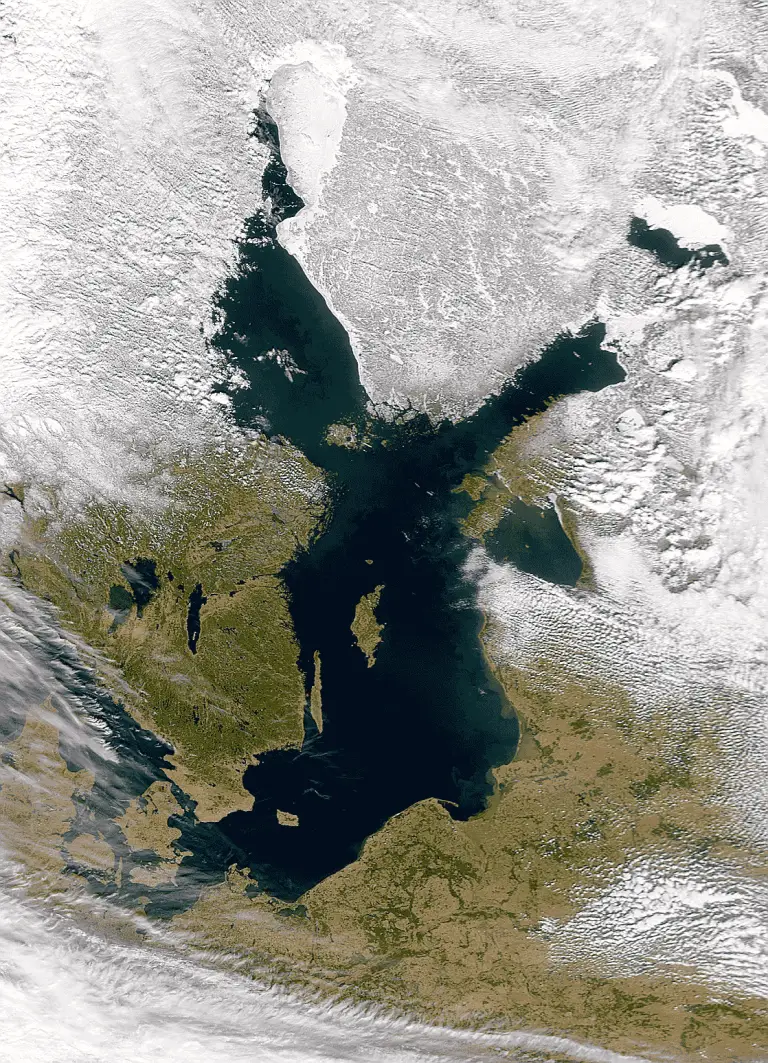
Does the Baltic Sea freeze over in winter?

According to scientific research, the Baltic Sea has frozen many times. The earliest records of freezing date back to the Vikings, who traveled on the frozen sea. In the Middle Ages, freezing the Baltic Sea was a common phenomenon, significantly affecting trade and communication between the Baltic states.
In the 16th and 17th centuries, the Baltic Sea peaked at freezing. It was common for the ice to cover the entire sea, creating a solid surface that made it possible to travel on foot, in carts, and even on horseback. This unusual phenomenon attracted the attention of locals and travelers from other parts of Europe.
The freezing of the Baltic Sea has been recorded several times in recent decades, with the most notable events occurring in 1987, 1996, and 2010. During these periods, ice covered a large part of the sea, making navigation difficult and affecting seaport operations.
Ice formation in the Baltic Sea begins along the coasts of the northern Gulf of Bothnia and the inner Gulf of Finland, usually in late October and early November. Ice then spreads to the Quark, the open Gulf of Bothnia, and the coasts of the Bothnian Sea. In normal winters, ice also covers the rest of the Bothnian Sea, the Archipelago Sea, the entire Gulf of Finland, and part of the northern Baltic Proper.
In mild winters, the Bothnian Sea does not freeze at all and the Gulf of Finland is only partially covered by ice. In harsh winters, the ice reaches the Gulf of Denmark and the central part of the Baltic Proper. The last frozen area is north-east of Bornholm in the southern Baltic Sea.
The melting season begins in April and progresses from south to north. By early May, ice remains only in the northern Gulf of Bothnia, where the last bits of ice also melt by early June.
The Polish ports of Gdansk, Gdynia, Swinoujscie, and Szczecin are „ice-free.” Even when ice forms on the surface, it is never thick enough to paralyze port operations. Only prolonged and severe frost can cause ice to form, but during such periods, icebreakers clear the channels and basins.
Please visit below link for the latest ice report for the Baltic Sea,
Baltic Sea Icing Report (most recent published)
and particularly for the Polish coastline:
Polish coastline icing report (most recent published)
Sources: The Nautical Institute – London, Polish Institute of Meteorology and Water Management, Own elaboration;
ADDRESS & BUSINESS REGISTRATION
-
Anchor Agents & Shipbrokers Sp z o.o.
Aleja Zwycięstwa 241/13
81-521 Gdynia
Polska - KRS 0000187325; NIP 5881007972
